So, you’ve heard that there are many goldfish types worldwide but only know the ones with shiny orange and yellow bodies. That’s the Comet goldfish. It’s the most popular species, with distinctive golden scales that stand out in any aquarium. This comet goldfish overview takes you into the world of fancy aquarium goldfish. You’ll learn about their characteristics, including nutrition, temperament, breeding, health, lifespan, and tank setup.

Forget everything you thought you knew and use this guide as your comprehensive comet goldfish introduction.
Quick Sidenote: Do you want to watch this article instead of reading it? Checkout the highlight video below from our YouTube Channel (Or read the more detailed article below), be sure to Subscribe For More Great Fishkeeping Content:
Physical Characteristics of Comet Goldfish
You can’t mistake the comet goldfish appearance with any other type! Many aquarium enthusiasts and fish pond owners choose their pets based on size, color, and distinguishing features.
So, let’s measure the comet goldfish against these standards.
Comet goldfish may be either yellow, orange, red, white, or sometimes two of those colors. You can’t miss the shiny, bright tone in any water body, no matter how many other fancy fish are there.
“How large is it?” Up to 30cm with the right care, nutrition, and environment! That’s 12 inches of sleekness and beauty, including the comet goldfish’s tail. Unlike most species with four twin tails, the comet goldfish tail has two tips.
You can guarantee a lifespan of ten to twenty years with the proper tank setup. Here’s how:
Tank Setup for Comet Goldfish
The comet goldfish thrives in spacious tanks because of its 12-inch-long body and delicate fins. Use a 30-gallon tank size for a single comet goldfish, and add about 10 gallons every time you add a new fish.
Use the following water conditions to get the best out of your comet goldfish aquarium:
| Parameters | Level |
| pH (Acidity) | 6.5 – 7.5 |
| Ammonia | 0 parts per million |
| Nitrite | 0 parts per million |
| Nitrate | 40 parts per million |
Ensure your aquarium water has zero ammonia and nitrite after the nitrogen cycle completes.
I recommend installing a good filtration system to assist with the conversion into nitrate. You should also change the water in the tank periodically to prevent dirt from pooling and causing contamination.
Use other aquarium equipment like coolants to keep the temperature at 18°C – 22°C (65°F – 72°F) and small pruning shears to trim overgrown plants. Now that you’re done with your comet goldfish tank setup, let’s talk about feeding and diet.
Author’s Note: For some planted tank decor tips check out our article on The 8 Best Live Plants for Goldfish Aquariums, there are indeed live plants that can thrive in a goldfish habitat!
Diet and Feeding Requirements

Feeding comet goldfish is easy because they’re omnivorous. That means they can eat anything from live foods to plants. You can get specially formulated comet goldfish food, like packaged pellets and flakes, or make your own.
Here are some foods that’ll be good for your goldfish’s nutrition,
- Bloodworms and brine shrimps as live food
- Peas and cucumbers as vegetables
- Goldfish Pellets
For more on feeding your aquatic pets check out The Ultimate Guide to Fish Food: Pros and Cons & Best Choices!
Whatever you do, ensure they eat a balanced diet for a healthy life, but don’t overfeed them. You may feed them twice to three times daily, but only amounts they can consume within 5 to 10 minutes.
Why? Because overfeeding leads to excess waste from remnants and poop or pee. That waste becomes ammonia, dangerous for your comet goldfish’s health if left unprocessed.
Behavior and Temperament
Typically, comet goldfish are an active and social fish. They love moving around and are constantly munching on something just because. Also, their friendly temperament makes them great tank mates for other similar fish like the shubunkin.
The friendly comet goldfish behavior doesn’t mean you should slack and pair them with the wrong fish. Besides using equal goldfish personality as a pairing basis, size and feeding habits should also be considered.
Smaller fish tank mates will be at risk from comet goldfish because they may mistake them for food. Also, in reverse, if you pair them with bigger fish, they may become the prey. So, finding similar pairs is your best bet.
But if you need an interactive pet, then you’ve made the right decision with this one.
Breeding Comet Goldfish

Breeding comet goldfish isn’t a walk in the park, but it’s also not a difficult thing to do if you follow these guidelines:
Comet Goldfish Breeding Process
I recommend getting a separate tank for breeding if you want to get the best out of your spawning process. During comet goldfish reproduction, the eggs need a soft landing, and that’s where your soft plants or spawning mops become useful.
The female comet goldfish typically spawns its eggs in the early morning while the male fertilizes them externally. Immediately after this process ends, move the goldfish back to their living tanks and leave the eggs in the breeding tank.
Necessary Conditions for Breeding
More breeding tips for you include the water temperature in the tank while the eggs are waiting to hatch. Check the water parameters and ensure it’s free from contaminants, predatory plants, and animals. It’ll take 4 – 7 days for all eggs to hatch.
Tips for Raising a Comet Goldfish Fry
Once your comet goldfish fry hatches, it’s time for specialized care. Instead of the regular live food and plants you feed the comet goldfish, focus on flakes. Crush the flakes into tiny pieces so it’s easy for the fry to eat and digest them.
Also, pay double attention to the water because comet goldfish fry are more prone to sickness and contamination than adults.
Common Breeding Challenges
Some common breeding challenges you’ll face while breeding comet goldfish include:
- Increased aggressive behavior from an overexcited male eager to fertilize unspawned eggs.
- Fungal infection from contaminated tanks.
- Parents are eating their fry, especially if you don’t build a separate breeding tank.
- Stunted growth, early death from malnutrition, overcrowding, or other poor tank conditions.
Solutions to Breeding Challenges

- To tackle aggressive behavior, build your tank with safety spots for hiding the female comet goldfish when they’re not ready to spawn.
- Clean your water twice weekly instead of once, and use high-quality filtration systems in the breeding tank. You can also add antifungal treatments to deter fungus growth. But be careful not to overdo it. If there’s already a single egg infected with fungus, quickly separate it from the rest to prevent contamination.
- Use a breeding tank to hatch your eggs instead of keeping them with your parents.
- Feed the comet goldfish fry with specialized food for proper nutrition, and don’t keep them with predators.
- Ensure enough space for each fry to move around without suffocating or hitting each other in the tank.
Now, let’s discuss common health issues and how to avoid them.
Common Health Issues and Prevention
You’ve seen the breeding challenges of this species and how to tackle them. Once you’ve successfully bred your fish, how do you maintain its health? Do you just leave the fish care to nature, or are you ready to take precautions for disease prevention?
The comet goldfish’s health requires close monitoring because this species is prone to sickness. I’ll start with the common health issues and add identifiable symptoms before ending each set with solutions and preventions.
Without maintaining proper water parameters, the tank’s water quality can degrade, which can cause a wide range of issues from cloudy aquarium water to illness and mass fish die off, so pay close attention to the following sections.
Let’s get to it!
Dropsy
When a comet goldfish has a bacterial infection causing kidney failure, it retains fluid instead of passing it out as waste. This illness is called Dropsy, and it’s noticeable through bloating. Unfortunately, Dropsy is often fatal because it’s tough to treat.
So, prevention is better than searching for a cure. Feed your comet goldfish adequately with a balanced diet, and when you notice it’s bloating, separate it from the rest. Then, get a fish vet to diagnose and treat it.
Fin Diseases (Rot and Nipping)

Fin rot results from bacterial infection from contaminated water, untreated injuries, or even stress, while Fin nipping happens when fish hit each other from overcrowding. You’ll see physical scabs and wounds on the fish’s fin in both cases.
Once there’s an injury, it’s best to treat it promptly in a separate tank. You can prevent fin diseases by using large tanks and avoiding overcrowded aquariums for your comet goldfish.
Swim Bladder Issues
Overfeeding can become deadly because it leads to constipation and strain on the comet goldfish’s internal organs. Return to my tips on properly feeding your pets and always prioritize a balanced diet. See a vet if you notice your fish has a swimming bladder issue.
White Spot Disease
White spot disease, or Ich, is a parasitic infection in comet goldfish. It’s one of the easiest illnesses to notice because it causes white spots to spread on your fish’s body. You can prevent this by always keeping your aquarium’s water in the best conditions.
Use a coolant to maintain a cool temperature and avoid sudden spikes, encouraging parasitic growth in the tank.
For an in-depth overview of causes, diagnosis, and treatments for white spot diseases (also known as ich) in fish check out this article.
Lifespan and Growth
A healthy goldfish gets a growth spurt within its first year before slowing down in the next two to three years and halting by the fourth and fifth years.
Have you thought of the comet goldfish lifespan and whether it’s worth stressing to care for it? Many aquarium enthusiasts prioritize goldfish longevity when choosing a species, and that’s why they love the comet.
If you follow all the fish care tips in this guide, from breeding to feeding, health, and tank maintenance, your comet goldfish can live up to 20 years in good health!
Although all comet goldfish don’t have the same growth rate, the average length is 10 to 12 inches, which is 25 to 30 cm long. But to get this length, you must ensure your tank is large enough to accommodate your fish’s maximum size.
Before I leave you, let’s compare the comet goldfish with other popular goldfish varieties so you can finally decide if it’s truly the one for your aquarium.
Comet Goldfish vs Other Goldfish Varieties

Comparison, in this case, is good because you can’t truly appreciate any of the goldfish varieties without seeing their differences.
To give you perspective, I’ve compiled the most important parts of fish comparison, from their behavior to appearance and care requirements. The first on the list is the Common Goldfish, similar to the comet.
Comet Goldfish vs. Common Goldfish
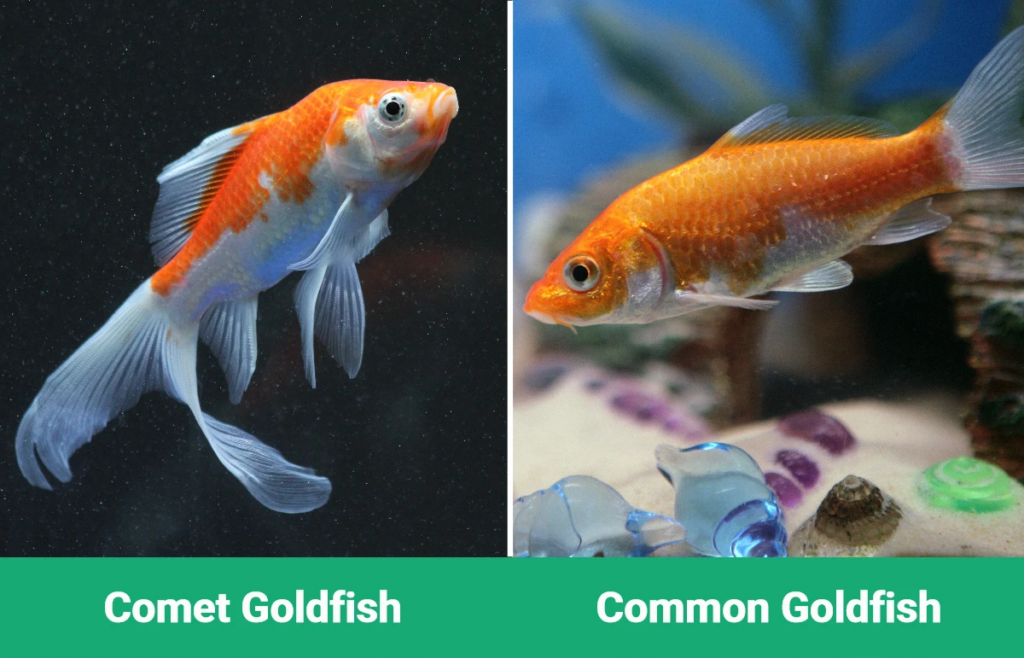
- Body: The comet goldfish is longer and has sleeker flowing fins than the common goldfish, but they have similar colors.
- Behavior: Both fish are active swimmers, but the comet goldfish is faster because of its body shape. The comet goldfish is hardy and does well in outdoor ponds if you don’t want an inner aquarium.
- Care Requirements: Comet goldfish thrive in cool water with ample swimming space and eat live and plant-based foods.
Comet Goldfish vs. Fancy Goldfish
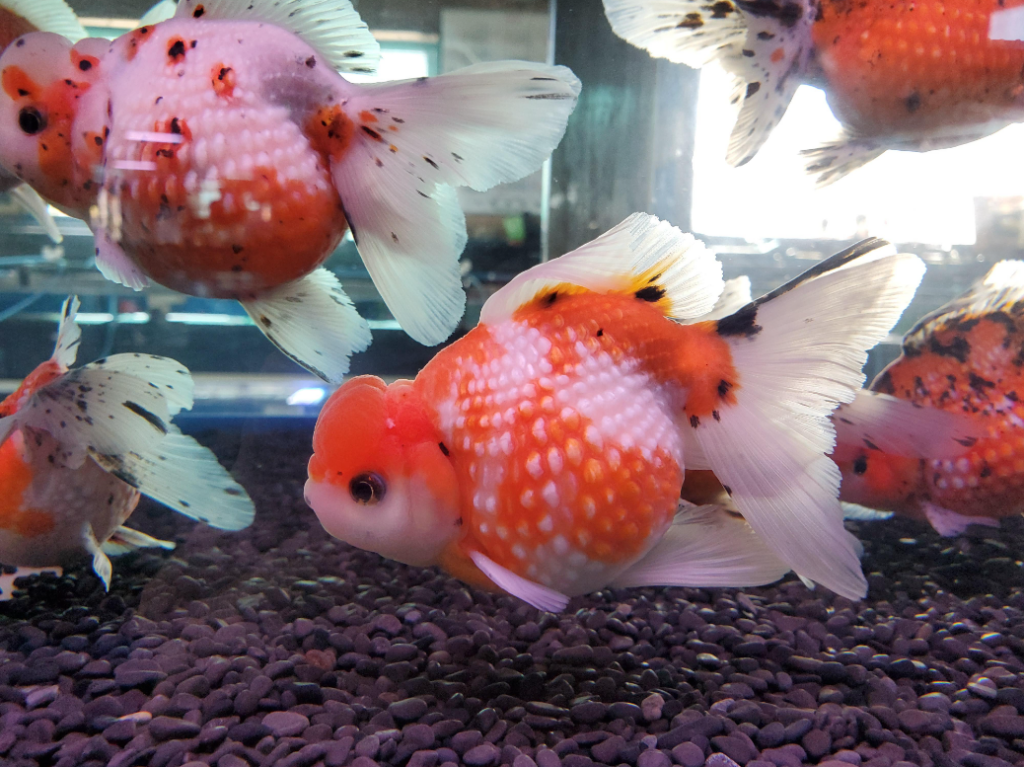
- Body: Fancy goldfish come in different shapes and sizes with unique features. We have the telescopic eye goldfish, which has bulging large eyes. The pearl goldfish has skin-like pearl discs and many more interesting species.
- Behavior: Most fancy goldfish with large bodies are aggressive, while the ones with smaller bodies and delicate features are mild-mannered, unlike the comet goldfish, which is active.
- Care Requirements: Unlike the comet goldfish, fancy goldfish have specific diets depending on their features.
Conclusion
I can’t believe we’re already at the end. It’s been an interesting ride sharing my ideas and knowledge on comet goldfish with you. Here’s a quick recap on goldfish care before I leave:
Comet goldfish are like other regular aquarium fish with minor adjustments as mentioned throughout this article. They require a healthy tank setup, a balanced diet in their nutrition, separate breeding tanks, and extra care for maximum lifespan in good health.
Responsible fishkeeping is about dedication to the cause and paying attention to your pet fish for signs of trouble. Because nipping health problems in the bud early is better than doing damage control later.



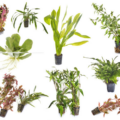

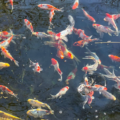
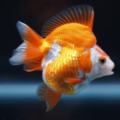
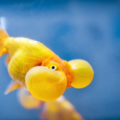

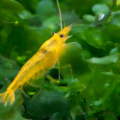

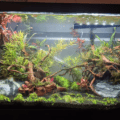
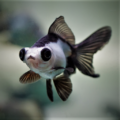
2 thoughts on “Comprehensive Guide to Comet Goldfish: Care, Diet, Tank Setup, and More ”